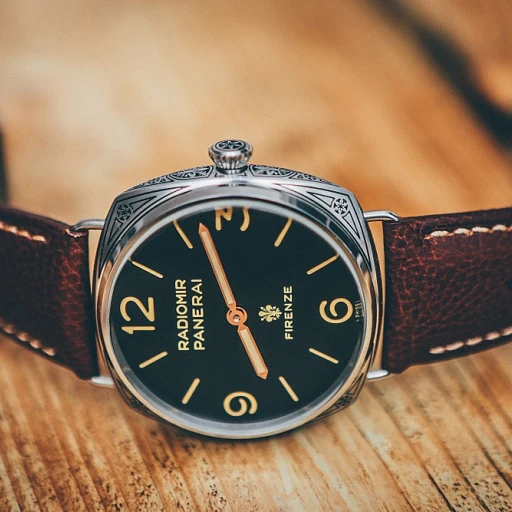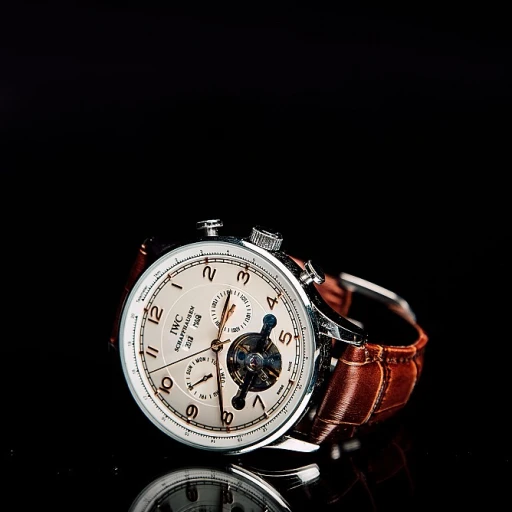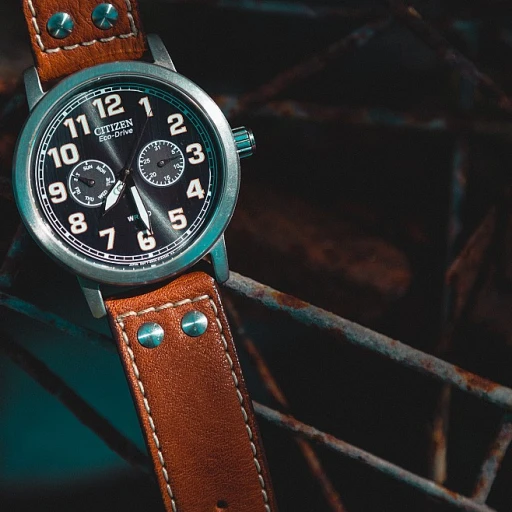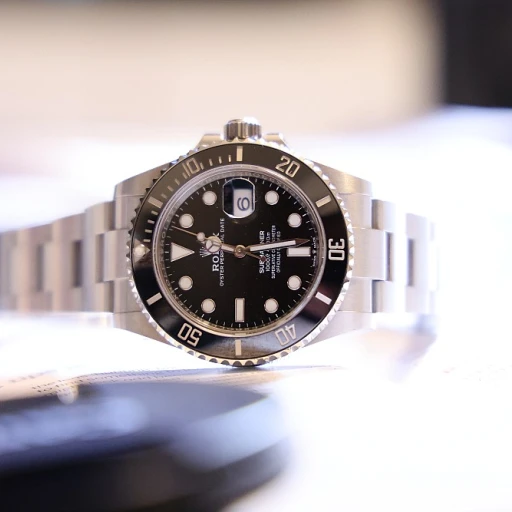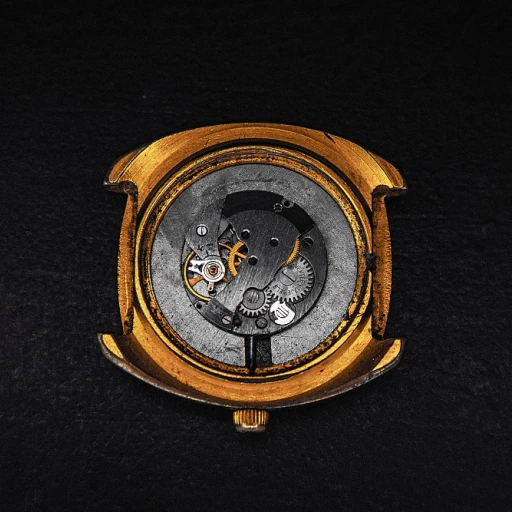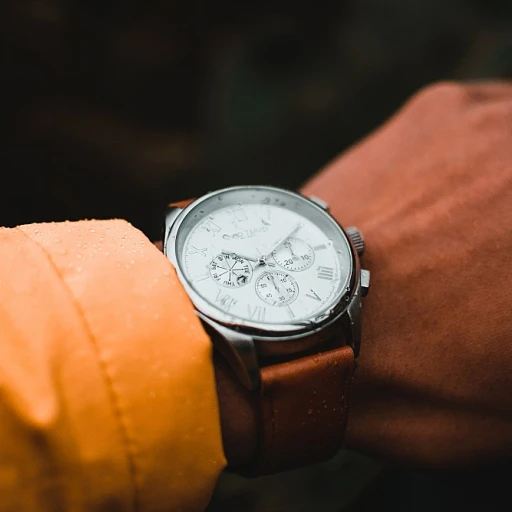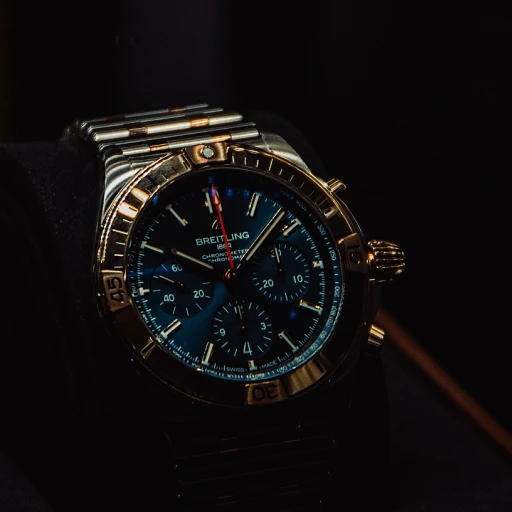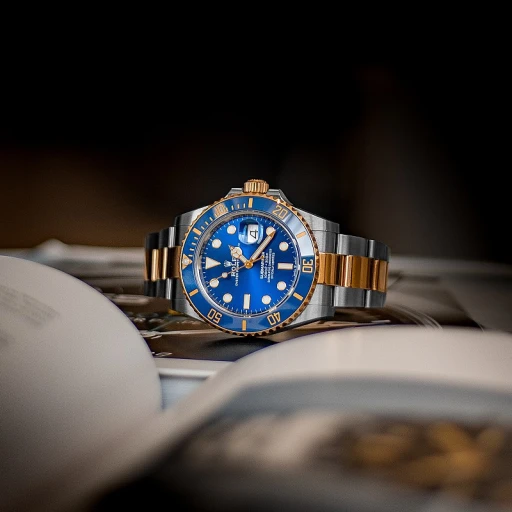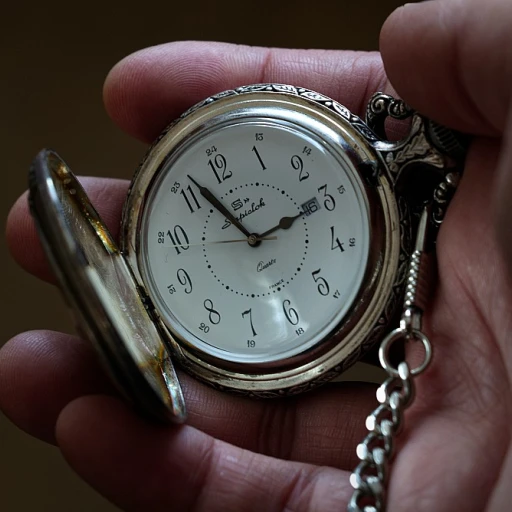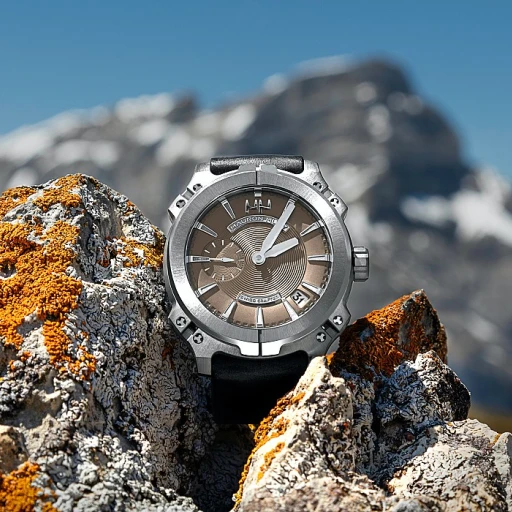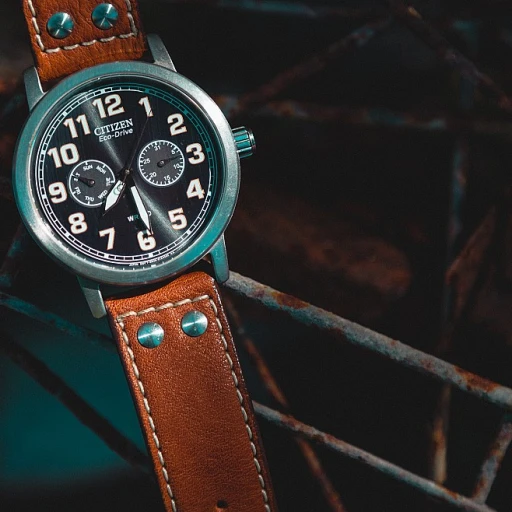The legacy of Hublot: from Carlo Crocco to Jean-Claude Biver
Carlo Crocco's vision: the birth of Hublot
In 1980, Carlo Crocco, an Italian watchmaker with an immense passion for horology, embarked on a journey that would forever change the luxury watch landscape. He established Hublot, a brand that disrupted traditional watchmaking with its innovative use of materials. Hublot's name, meaning 'porthole' in French, was inspired by its debut watch design, which featured a porthole-shaped case. This timepiece was unique, showcasing the first-ever natural rubber strap in the luxury watch market. It wasn't just a watch; it was a statement of modernity and daring.The Jean-Claude Biver era: revolutionizing Hublot
In 2004, Jean-Claude Biver joined Hublot as CEO, bringing his visionary approach and marketing acumen. Biver, already a game-changer in the watch industry with his successful revitalization of Omega and Blancpain, sought to propel Hublot into uncharted territories. Under his leadership, Hublot introduced the now-legendary Big Bang collection in 2005. The collection was a resounding success, embodying the brand's “Art of Fusion” philosophy by blending traditional watchmaking techniques with contemporary materials such as ceramic, titanium, and King Gold.Innovative materials and craftsmanship
Biver's tenure not only introduced iconic models but also focused on innovation in material science. Hublot's “Art of Fusion” became synonymous with their watches, incorporating unique materials like Magic Gold—a scratch-resistant gold alloy developed in collaboration with EPFL (Swiss Federal Institute of Technology). Hublot also pioneered the use of colored ceramics and innovative carbon fiber techniques. These advancements distinguished Hublot from its competitors and allowed the brand to command premium prices.For further details on the investment potential of these luxury timepieces, don't miss the luxury watch valuation dynamics that can impact your buying decisions.Iconic Hublot models and their price ranges
A journey through Hublot's iconic models
From the unforgettable Hublot Big Bang to the Classic Fusion and the robust Spirit of Big Bang, Hublot offers a captivating array of unique watches. These pieces, celebrated for their innovative designs and high craftsmanship, traverse various price points. For instance, the Big Bang Unico, known for its chronograph and tourbillon features, generally costs between USD 18,000 and USD 35,000 depending on materials and design intricacies (Source: Luxury Time Piece).
Big Bang: a luxurious staple
The Hublot Big Bang series remains a classic choice, debuting in 2005 and constantly evolving over the years. Its ceramic, titanium, and gold components, along with the Big Bang Integrated design, offer a lavish yet sporty appearance. Market prices for these models range from USD 8,000 to USD 50,000. Notable examples include the Big Bang Integrated Time, famous for its smooth bracelet integration.
Classic Fusion: understated elegance
The Classic Fusion series, however, embodies a more refined elegance. Its Fusion Titanium, King Gold, and Ceramic Big Bang variations appeal to those seeking sophistication. Expected prices start around USD 7,000, climbing up to USD 20,000 for more intricate Classic Fusion chronographs or diamonds-encrusted pieces.
The innovative spirit of Big Bang
Among the brand's masterpieces, the Spirit of Big Bang collection stands out with its unique tonneau-shaped case. The Spirit Big Bang Unico Titanium, priced around USD 20,000, showcases Hublot’s bold innovation, emphasizing the brand's versatility. Another extravagant piece, the Spirit of Big Bang King Gold, reflects a price range of USD 40,000, making it exclusive for high-end collectors.
Limited editions and influence
Hublot's collaborative ventures span associations with prestigious entities like FIFA, Ferrari, and sports icons such as Kylian Mbappé and Usain Bolt. These collaborations yield special editions, significantly influencing the price. For example, a limited-edition Hublot Big Bang Ferrari edition can reach upwards of USD 42,000, driven by its rarity and unique branding.
This variety of iconic models from past to present not only highlights Hublot’s impressive legacy but also underscores its broad appeal across different tastes and price points.
Materials and craftsmanship: the making of a Hublot watch
The artistry of Hublot's materials
When it comes to the price of a Hublot watch, one can't ignore the significance of the materials used. Hublot prides itself on revolutionary materials that not only enhance durability but also elevate elegance. For instance, the Big Bang series is renowned for its use of fusion technologies, combining elements like titanium, carbon fiber, and ceramic to create unique timepieces. It's not just about luxury; it's about pushing the boundaries of watchmaking.
Exotic metals and precious stones
Magic Gold is one of the standout materials developed by Hublot. Introduced in 2012, it's the world's first scratch-resistant 18-carat gold alloy, a true marvel in the luxury watchmaking industry. This innovation alone justifies a higher price point. For example, the Big Bang Unico King Gold retails around USD 43,600, thanks to its use of this unique material.
Adding to the allure, high-end models like the Pave Big Bang or the diamonds Big Bang integrate precious stones meticulously set by master jewelers. The labor and craftsmanship involved in setting hundreds, sometimes thousands, of diamonds, further inflate the cost. One of the most extravagant examples is the Big Bang Integrated Time, embedded with diamonds and valued at USD 155,000.
Ceramic and titanium: blending tradition with innovation
Ceramic is another groundbreaking material Hublot employs, famed for its lightness and scratch resistance. The Ceramic Big Bang, blending ceramic with rubber straps, presents a contemporary look with the durability to match, priced between USD 18,000 to USD 22,000.
Another favorite is titanium. The Classic Fusion Titanium and Unico Titanium models are celebrated for being hypoallergenic and resistant to corrosion. These watches fall in the range of USD 12,000 to USD 15,000, making them relatively accessible for a luxury watch aficionado.
The role of craftsmanship and watchmaking expertise
Craftsmanship is paramount when it comes to manufacturing a Hublot Classic Fusion. Every watch undergoes rigorous quality checks, and skilled artisans meticulously assemble every component. The complexity and sheer labor involved in ensuring precision translate directly to a higher regular price. Brands like Omega and Bulgari also emphasize similar levels of craftsmanship, but Hublot remains in a league of its own due to its unique material approaches.
From the durability of Black Magic to the luxury of King Gold, Hublot's use of materials and craftsmanship not only sets it apart but also significantly influences the price structure. This impeccable attention to detail and innovation ensures that each Hublot watch isn't just a time-telling device; it's a piece of art.
Special editions and collaborations: limited editions and their impact on price
Limited editions: the rare gems driving prices sky-high
When you think about Hublot, the one word that probably pops into your mind is 'exclusive.' This Swiss powerhouse has made a name for itself by crafting timepieces that aren't just watches but collectibles. Especially when we dive into their special editions and collaborations, you get a clearer picture of why some models can fetch jaw-dropping prices.Take, for example, the Big Bang Unico models that often come in limited runs. One could be decked out in vivid blue ceramic while another might be laden with sparkling diamonds. As soon as Hublot slaps a 'limited edition' label on it, collectors worldwide start lining up. Just how limited are we talking? Most special editions see runs of anywhere from 50 to a few hundred, making them more exclusive than your average high-end watch.
Celebrity collaborations: when big names meet big watches
Hublot has never shied away from the limelight, and their high-profile collaborations definitely prove this point. Think of the Spirit of Big Bang series, often in collaboration with influential figures like Kylian Mbappé or Usain Bolt. These alliances not only add a certain 'cool' factor but significantly hike up prices. For example, the Big Bang Unico Sapphire Usain Bolt edition retailed at a whopping USD 30,000.
Sports partnerships have also been a game-changer. Hublot is the go-to timekeeper for FIFA and UEFA Euro, even crafting special editions for these events. The FIFA World Cup 2018 Official Watch, limited to 2018 pieces, became a collector's item overnight.
Materials matter: it's all in the little details
Material choices for Hublot special editions are nothing short of extraordinary. Take the King Gold, a proprietary red gold alloy that's often used in limited-run models like the classic fusion. Or, how about their Magic Gold - a fusion of ceramic and gold, claimed to be scratch-resistant. There’s also the Unico Titanium models, which meld cutting-edge tech with a sleek aesthetic. Each of these unique elements significantly drives up the price.
The iconic Big Bang Tourbillon Automatic features in Hublot’s special editions like a rock star. Not to forget the meticulous craft behind embedding diamonds onto watches such as the diamonds big bang, which combines both bling and functionality.
The resale story: where rarity meets value
When it comes to resale value, special editions have an edge. Watches like the Unico King Gold or Big Bang Integrated sometimes see sale prices climb even higher than their initial retail prices. Market reports show that rare pieces can fetch anywhere from 20% to 50% above their original price during auctions. This vibrant secondary market is buoyed by the limited availability and rare materials of these models. For more insights, check out our detailed analysis on luxury watch auction trends.
The role of complications: tourbillons, chronographs, and more
The importance of tourbillons in Hublot watches
Tourbillons, a complex and exquisite feature in luxury watches, play a significant role in driving the price of a Hublot watch. Introduced in 1795 by Abraham-Louis Breguet, the tourbillon is a mechanical complication designed to counteract the effects of gravity on the timekeeping mechanism. It is often seen in high-end models like the Big Bang Tourbillon Automatic, which showcases Hublot's dedication to precision and artistry.
Understanding Hublot's chronographs
Chronographs, or stopwatches, are another notable complication that boosts the value of Hublot watches. Hublot's robust chronograph models, such as the Big Bang Unico and the Classic Fusion Chronograph, offer advanced functionality with intricate designs. These timepieces are sought after by collectors for their ability to measure elapsed time in minutes, seconds, and even split seconds.
The appeal of perpetual calendars
Perpetual calendars are among the most intricate complications featured in Hublot watches. These mechanisms automatically adjust for months of varying lengths and leap years, ensuring that the date display remains accurate without manual correction. The complexity and engineering prowess required to create a perpetual calendar significantly impact the price of models like the Big Bang Unico King Gold Pave.
The grandeur of minute repeaters
Regarded as one of the most prestigious watch complications, minute repeaters chime the time on demand. Integrating this feature requires exceptional craftsmanship and enhances the allure and value of watches such as the Big Bang Black Magic. Minute repeaters stand as a testament to Hublot's commitment to producing masterful horology works.
In summary, the integration of complications such as tourbillons, chronographs, perpetual calendars, and minute repeaters elevates the technical sophistication and market value of Hublot watches. These features not only enhance the aesthetics and functionality but also reflect the brand's ingenuity and dedication to high watchmaking standards.
Market trends and resale value of Hublot watches
Change in buyer preferences and Hublot resale value
Resale value is a crucial aspect when it comes to investing in luxury watches. For Hublot, this is swayed by various factors. Notably, the price of a Hublot watch often dips slightly after the initial purchase but maintains a significant proportion of its value over time. It’s reported that Hublot watches can retain up to 70% of their value depending on the model and condition (source: WatchCharts).
Market demand and trends
The market demand for models like the Hublot Big Bang and the Classic Fusion plays an essential role in resale value. For instance, the limited editions such as the Big Bang Tourbillon Automatic or King Gold models tend to fetch higher prices on the secondary market compared to standard editions. According to a report by Luxury Time Piece, the scarcity of these editions contributes greatly to their desirability.
The impact of materials and complications
The materials used in the watch significantly affect the resale price. Hublot’s Magic Gold, a unique blend of gold and ceramic, and UNICO Titanium, hold high resale values because of their exclusivity and durability. Furthermore, watches featuring intricate complications like tourbillons or chronographs often command better resale prices.
Expert insights
According to Jean-Claude Biver, former CEO of Hublot, the brand’s appeal lies in its “Art of Fusion,” combining groundbreaking designs with traditional Swiss watchmaking techniques. This unique positioning gives Hublot a strong market presence, thereby helping its watches maintain value over time.
Carlo Crocco, Hublot’s founder, has also emphasized that Hublot’s innovative approach and partnerships with sports entities like UEFA and Ferrari have cemented its status as a top-tier watchmaker.
Tax, geography, and market fluctuations
Geographic factors like country-specific taxes can also influence the price of a Hublot watch. In certain regions, import taxes can elevate the price considerably, while in others, favorable tax laws might make Hublot watches more affordable. Understanding these nuances can help buyers navigate the market more effectively.
In summary, Hublot watches, especially limited editions and models with unique materials or complications, have a strong resale value. Whether you’re a collector or a first-time buyer, understanding these trends and factors can ensure you get the best value for your investment in a Hublot watch.
Case studies: notable Hublot watch sales and auctions
Remarkable moments in Hublot sales history
Hublot's reputation for innovation and craftsmanship doesn't just fuel passion among collectors—it drives eye-watering auction prices. The peak of these notable sales can often be attributed to limited editions, pioneering materials, or collaborations, each underscoring the brand's prestigious status.The Big Bang exceptional sales
Let's start with the Hublot Big Bang collection, which remains one of the most sought-after. A standout case is the Hublot Big Bang Tourbillon Automatic Yellow Neon SAXEM. Limited to just a few units, one recently sold at auction for an astounding USD 270,000. Its unique neon visual appeal combined with Hublot's cutting-edge SAXEM material was a huge draw for collectors (source: Sotheby's).Unico editions and popularity
Over to the Unico series, which also boasts several high-profile sales. The Hublot Big Bang Unico Sapphire All Black has been a standout, auctioned off at USD 185,000. This piece's high price tag is thanks to its entirely transparent design and the innovative use of sapphire crystal (source: Christie's).Classic Fusion and its appeal
The Classic Fusion line, while generally more understated, features incredible craftsmanship that commands attention in auctions. An exceptional sale event included the Hublot Classic Fusion Tourbillon Skull Black Ceramic, which caught the hammer at USD 150,000. Amazingly, its sale price was driven by the gothic skull design and intricate tourbillon movement (source: Bonhams).King of collaboration: Ferrari!
Hublot’s collaboration with Ferrari also churned out some impressive auction results. The Hublot Big Bang Ferrari 45th Anniversary Special Edition was among notable pieces, fetching USD 280,000. Exclusivity and the powerful brand association played a significant role in its fetching price (source: Philips).Celebrity allure and limited editions
Among celebrity-favored pieces, the Hublot King Gold Rainbow has shone brightly at auctions. Recently, a unit was sold for USD 210,000. Its vibrant multi-colored sapphire-set bezel and King Gold casing were major highlights that captivated bidders (source: Antiquorum).Market trends and resale
Hublot’s strategic use of materials like Magic Gold and partnerships with icons like Usain Bolt and Kylian Mbappe undeniably impact resale value. While the primary market sees high sticker prices, pieces like the Big Bang Integrated and Spirit Big Bang also tend to retain or increase in value in the secondary market. Experts opine that resale values can realize an increase of up to 20% for well-maintained pieces (source: WatchBox).Understanding the intricacies of Hublot's market can be an asset for potential buyers. Explore more on why brands like these hold, and often grow, in value by diving into this guide.
Factors influencing Hublot watch prices: taxes, country-specific pricing, and more
The tax impact on Hublot watch prices
Taxes can significantly influence the price of a Hublot watch. Depending on the country, taxes such as Value Added Tax (VAT) can add between 7% to 25% to the retail price, with variations based on local regulations. For instance, in Switzerland, the homeland of Hublot, the VAT is set at 7.7% as of 2023.
In contrast, the United Kingdom enforces a VAT rate of 20%, which considerably raises the final price. When buying a Hublot in the USA, the tax varies by state, ranging from 0% in states like Delaware to over 9% in states such as California.
Country-specific pricing strategies
Hublot prices aren't uniform worldwide due to various factors like import duties, distributor costs, and localized marketing strategies. For instance, a Hublot Big Bang Unico King Gold might be cheaper in Switzerland compared to Australia due to lower import taxes and distributor margins.
Moreover, Hublot often aligns its prices based on the market's purchasing power. That means the retail price in affluent regions like Dubai might be higher to match the local luxury spending behavior, while regions with less purchasing power might experience slightly reduced prices.
Gray market dynamics
The gray market also affects Hublot's pricing dynamics. Watches sold outside authorized retail channels often come with a lower price tag, but this comes with risks such as lack of warranty and authenticity concerns. Reliable sources like the Federation of the Swiss Watch Industry have warned against gray market purchases, citing potential loss in quality assurance.
However, for some buyers, the allure of saving up to 30% off the regular price outweighs these risks.
Luxury sales tax and import duties
Luxury sales taxes, often higher than standard VAT, can drive up the price significantly. In places like Russia, luxury goods face additional taxes that can elevate prices steeply. Import duties further compound this; for instance, India applies duties that can exceed 40%, making Hublot watches significantly more expensive than the global average.
This creates a complex pricing terrain, where savvy watch collectors might consider purchase locations based on tax efficiencies.
Impact of supply chain costs
Hublot's meticulous craftsmanship and use of materials like magic gold, titanium, and diamonds contribute to supply chain costs. Recent disruptions in global logistics have spiked these costs. Reports indicate an increase in the price of raw materials by up to 15% in 2022, which naturally filters down to retail prices.
Market trends and consumer demand
The demand for models like the Hublot Big Bang Unico Titanium can push prices up due to scarcity and high consumer interest. According to a 2023 report from the LVMH Group, which owns Hublot SA, these models often see a price appreciation rate of approximately 5-10% annually due to consistent market demand.
